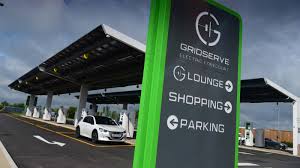
Common things that drain your electric car battery
Gridserve, which operates charging stations across the UK, has compiled a list of its most-commonly-asked questions to ‘EV Gurus’ and leasing consultants who work at their sites. In a bid to set the record straight once and for all, the EV-charging firm has done the math to highlight what the true impact is.
The single biggest drain on your battery, other than actually driving, is climate control. Whether that’s keeping you cool in summer or toasty in winter, systems typically require about 3-4kW to run, which equates to seven miles of range per hour to run the air-con and five miles per hour to run heaters. That means over a three-hour summer holiday road trip, you’ll need to account for around 20 miles for the air conditioning.
That’s compared to less than half a mile per hour if you use the heated seats and steering wheel. Think about that, around 1,000 times less impact by heating the person rather than the entire car.
And the same effect if you pop the window to stay cool. That said, be careful about doing so at high speeds as the impact on aerodynamics and increased drag could offset the savings you’re making by not putting the air-con on low.

Your heated screens, front and rear, will also be a minor drain on your battery. Heated windscreens are much more energy intensive than rear screens but usually have an automatic switch off after a short time to reduce energy demand.
- Air-con: 7.5 miles/hour
- Heaters: 5.7m/h
- Heated seats: 0.3m/h
- Heated steering wheel: 0.1m/h
- Heated windscreen / rear screen / mirrors: 0.1m/h
Lighting
You’ll notice your home electricity bill soar in the winter as you put your lights on earlier and for longer – so is the same true in a car when commutes are done in the dark? Fortunately, the impact is minimal.
Lighting systems, whether that’s fog lights, brake lights or headlights, use a tiny amount of energy in the grand scheme of things – equal to just 0.2 miles per hour.
- Indicators, fog lights, brake lights, headlights: 0.2m/h
On-board tech
Cars are loaded with an increasing amount of kit – huge touchscreens, banging sound systems and a plethora of USB chargers to keep your various devices topped up on the go. So how does this impact your range? Should you sit in silence and turn off the infotainment screen if you’re running low on juice?
If things are getting desperate then, potentially, yes. An audio system can use 0.3 miles per hour while an infotainment display uses 0.4 miles per hour. A USB charger is less of a worry, with a minuscule amount of impact on range – although if you’ve got four or five plugged in, you might start to see an impact.
- Audio system: 0.3m/h
- Infotainment display: 0.4m/h
- USB charger: 0.1m/h
Information Source: Read More “
Energy Monitors , Electric Power , Natural Gas , Oil , Climate , Renewable , Wind , Transition , LPG , Solar , Electric , Biomass , Sustainability , Oil Price , Electric Vehicles,


